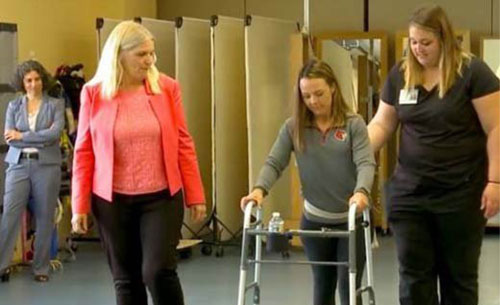In 2017, Michel Roccati was in a motorbike acci-dent that left his lower body completely paralysed. In 2020, he walked again, thanks to a breakthrough new spinal cord implant.
The implant sends electrical pulses to his mus-cles, mimicking the action of the brain, and could one day help people with severe spinal injuries stand, walk and exercise.
It builds on long-running research into using electrical pulses to improve quality of life for people with spinal cord injuries, including a 2018 study by the same team that helped people with partial lower-body paralysis walk again.
“It was a very emotional experience,” Roccati told journalists of the first time the electrical pulses were activated and he took a step.
He was one of three patients involved in the study, published Monday in the journal Nature Medicine, all of them unable to move their lower bodies after accidents.
But the three were able to take steps shortly af-ter the six-centimetre implant was inserted and its pulses were fine-tuned. “These electrodes were longer and larger than the ones we had previously implanted, and we could access more muscles thanks to this new technol-ogy,” said Jocelyne Bloch, a neurosurgeon at the Lausanne University Hospital who helped lead the trial.
Those initial steps, while breathtaking for the researchers and their patients, were difficult and required support bars and significant upper body strength.
But the patients could start rehabilitation imme-diately, and within four months Roccati could walk with only a frame for balance.
“It’s not that it’s a miracle right away, not by far,” cautioned Gregoire Courtine, a neuroscientist at the Swiss Federal Institute of Technology who led the research with Bloch.—AFP










